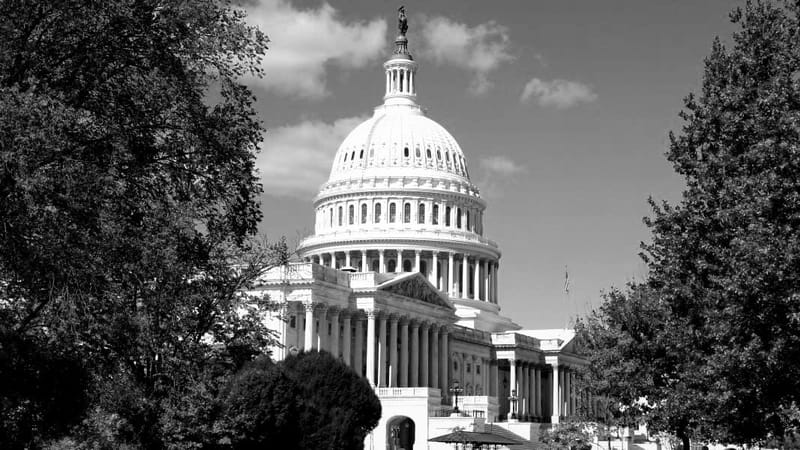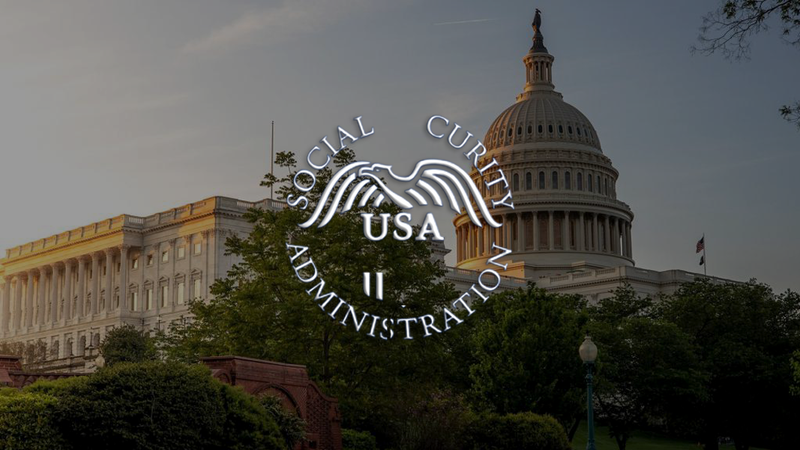FY 2026 SNAP benefits: Updated work requirements, caps, and federal funding under Trump
New work requirements for seniors, frozen benefit adjustments, and permanent funding reserves: This guide details exactly how the FY 2026 budget package reshapes the Supplemental Nutrition Assistance Program (SNAP) and what beneficiaries need to do to keep their coverage.

Following the historic 43-day federal government shutdown in late 2025, the landscape of American food assistance has fundamentally shifted. To reopen the government, Congress passed a complex compromise involving two distinct pieces of legislation. Understanding how these two bills interact is critical for beneficiaries, state agencies, and advocates.
The new SNAP landscape rests on two pillars:
- The Funding Bill (H.R. 5371): Officially titled the Continuing Appropriations, Agriculture, Legislative Branch, Military Construction and Veterans Affairs, and Extensions Act, 2026, this bill "wrote the check." It ensures that SNAP and related programs have the cash flow to operate through the fiscal year.
- The One Big Beautiful Bill Act (H.R. 1): This legislation "changed the rules." It alters the statutory framework of SNAP, modifying who is eligible, how much work they must perform, and how benefit amounts are calculated.
While the funding bill guarantees that benefits will flow, H.R. 1 ensures that keeping them will require new actions from millions of recipients. The following sections detail exactly how these changes interact and what they mean for your household.
Sources & References
This article is sourced directly from the
- Official statutory text of H.R. 5371 (specifically Division B, Title IV), enacted on November 12, 2025,
and the
- One Big Beautiful Bill Act (H.R. 1), enacted on July 4, 2025.
FY 2026 SNAP Benefits: At-a-Glance
- Status: Open and Fully Funded through September 30, 2026.
- Biggest Win: $6 billion in new emergency reserve funds to prevent future shortfalls.
- Biggest Restriction: Work requirements now apply to adults up to age 65 (previously 54).
- Biggest Cut: Future benefit adjustments are capped at inflation only, ending "needs-based" increases.
What SNAP Funding Has Been Secured?
While much of the federal government is operating under a temporary "Continuing Resolution" that expires in January 2026, food assistance programs were carved out and given full-year permanent status. This provides a unique layer of security for SNAP recipients that other federal beneficiaries do not currently have.
1. Full Year Funding
Division B, Title IV of H.R. 5371 appropriates $107,481,218,000 (approx. $107.5 billion) specifically for SNAP. This money is legally available for use through September 30, 2026, bypassing the uncertainty of the January 30 deadline that applies to other agencies.
2. New Emergency Reserve Funds
To prevent benefits from running dry in the event of an economic downturn or unexpected spike in participation, Congress created substantial reserve funds. H.R. 5371 sets aside:
- $3 billion available through September 30, 2027.
- $3 billion available through September 30, 2028. These funds are held in reserve and can only be used if necessary to maintain program operations.
3. The Broader Safety Net
The funding bill also solidifies the financial footing for related nutritional programs, ensuring a comprehensive safety net for FY 2026:
- WIC: The Women, Infants, and Children program received $8.2 billion, with $150 million placed in reserve to manage participation costs.
- Child Nutrition: School lunch and breakfast programs received over $37.8 billion, available through September 2027.
- Commodity Assistance: The Emergency Food Assistance Act (TEFAP) and disaster assistance programs received over $551 million.
New Eligibility Rules: Who Still Qualifies? (H.R. 1)
While H.R. 5371 provided the money, the One Big Beautiful Bill Act (H.R. 1) significantly tightened the rules for accessing it. These structural changes focus heavily on work requirements and exemptions.
1. The "Graying" of Work Requirements
Historically, "Able-Bodied Adults Without Dependents" (ABAWDs) were subject to time limits on benefits unless they worked or volunteered 80 hours a month. This rule generally applied to adults aged 18 to 54.
- The New Rule: Section 10102 of H.R. 1 amends the Food and Nutrition Act of 2008 to expand this age bracket significantly. The work requirement exceptions now apply only if an individual is "under 18, or over 65 years of age."
- The Impact: Individuals aged 55 through 64—a demographic often facing age discrimination in the job market or age-related health decline—must now document work, job training, or volunteer hours to keep their food benefits.
2. The "Parent Penalty" Change
Previously, living in a household with any child under 18 typically exempted an adult from the strict ABAWD work time limits.
- The New Rule: Section 10102 modifies the exemption to apply only to a parent or household member with responsibility for a dependent child under 14 years of age.
- The Impact: Parents of high schoolers (ages 14–17) are no longer automatically exempt. Unless they qualify for another exemption (such as disability), these parents may be subject to time limits if they cannot find sufficient work.
3. New Protections for Tribal Members
Amidst the tightening restrictions, H.R. 1 carves out a new, permanent statutory protection.
- The Rule: Section 10102 adds a specific exception for "an Indian or an Urban Indian" (as defined in the Indian Health Care Improvement Act).
- The Impact: This ensures that Tribal members, regardless of age or parental status, are exempt from the new, harsher time limit rules.
4. Immigrant Eligibility Restrictions
Section 10108 of H.R. 1, titled "Alien SNAP Eligibility," revises the eligibility standards for non-citizens. While the exact scope is complex, the provision generally rolls back eligibility for specific categories of lawfully present non-citizens who previously qualified (such as certain humanitarian parolees or other protected groups), restricting access primarily to U.S. citizens and specific long-term permanent residents.
Benefit Amounts: The "Cost Neutrality" Freeze (H.R. 1)
While H.R. 5371 guarantees that checks will go out, the One Big Beautiful Bill Act (H.R. 1) fundamentally changes the math used to determine how big those checks are. This section represents a pivot from a "needs-based" calculation to a strict "cost-capped" calculation.
1. Understanding the Thrifty Food Plan (TFP)
SNAP benefit amounts are determined by the Thrifty Food Plan, a model basket of foods that represents a nutritious diet at a minimal cost. Historically, the USDA had the authority to re-evaluate this basket to reflect modern dietary guidelines (e.g., eating more fresh produce), which could increase the real value of benefits.
2. The Permanent Cap
Section 10101 of H.R. 1 introduces a "Cost Neutrality" mandate that restricts future updates to the TFP.
- The Change: The new law dictates that while the Secretary may re-evaluate the market baskets starting October 1, 2027, they "shall not increase the cost of the thrifty food plan based on a re-evaluation."
- Inflation Only: Going forward, benefits will largely only increase based on the Consumer Price Index (CPI) for the 12-month period ending in June.
- The Consequence: If the cost of a healthy diet rises faster than general inflation—or if nutritional science recommends expensive changes (like more lean proteins)—SNAP benefits will legally no longer be able to rise to meet that standard. Over time, this is expected to erode the real purchasing power of the benefit.
Structural Changes: State Costs & Education (H.R. 1)
H.R. 1 includes profound changes to how the SNAP program is administered and funded behind the scenes. These changes do not affect benefit amounts directly but will severely impact how easy it is for beneficiaries to apply for and maintain them.
1. The "75/25" Cost Shift
Historically, the federal government and state governments split the administrative costs of running SNAP (salaries for caseworkers, office rent, computer systems) 50/50.
- The New Split: Section 10106 of H.R. 1 drastically alters this ratio.
- Through FY 2026: The 50% federal share remains.
- Starting FY 2027: The federal share drops to 25%, forcing states to cover 75% of administrative costs.
- The Consequence: States will face a sudden budget shortfall for running their SNAP offices. Without new state tax revenue, this will likely lead to:
- Closures of local SNAP offices.
- Reductions in caseworker staff.
- Significantly longer wait times for application approval and recertification.
2. The End of SNAP-Ed Funding
Section 10107 modifies the funding for the National Education and Obesity Prevention Grant Program (SNAP-Ed).
- The Change: The text amends the funding authorization to end with "fiscal years 2016 through 2025," rather than "each subsequent fiscal year."
- The Impact: This effectively terminates federal funding for nutrition education courses that teach low-income families how to shop for healthy food on a budget, removing the educational arm of the SNAP program.
Actionable Advice for Beneficiaries
Given the complexity of these changes, different groups need to take specific actions to protect their benefits.
For Seniors (Ages 55–64)
- Verify Your Age: If you are between 55 and 64, you are now subject to work requirements for the first time.
- Check for Exemptions: Before scrambling to find work, check if you qualify for health-based exemptions. If you are "medically certified as physically or mentally unfit for employment," you are exempt. Get a doctor's note immediately if this applies.
- Document Volunteering: If you cannot find paid work, 20 hours of volunteering per week typically satisfies the requirement. Begin documenting hours immediately.
For Parents of Teens (Ages 14–17)
- Review Household Status: If your youngest child is 14 or older, you are no longer automatically exempt from work rules under the "parent" clause.
- Prepare to Report: Ensure you are ready to report your own work hours to the state agency to avoid your household's benefits being sanctioned.
For State Advocates & Agencies
- Prepare for 2027: The administrative funding cliff (the drop to 25% federal reimbursement) hits in Fiscal Year 2027. States must begin budgeting for this massive cost shift now to avoid office closures.
- Tribal Outreach: Ensure local "Indians and Urban Indians" are coded correctly in state systems to receive the new automatic exemption from work time limits.
Looking Ahead
The compromise that ended the 2025 government shutdown has created a mixed reality for America's food security net.
On one hand, H.R. 5371 provides stability. With full-year appropriations through September 2026 and massive emergency reserves, the check for SNAP benefits is signed, sealed, and delivered. Beneficiaries do not need to worry about the government running out of money for food stamps in the near future.
On the other hand, H.R. 1 erects higher fences around that aid. By raising the work requirement age to 65, capping future benefit growth, and shifting administrative costs to states, the legislation transforms SNAP into a program that is harder to access and strictly limited in its future generosity.
What to Read Next









